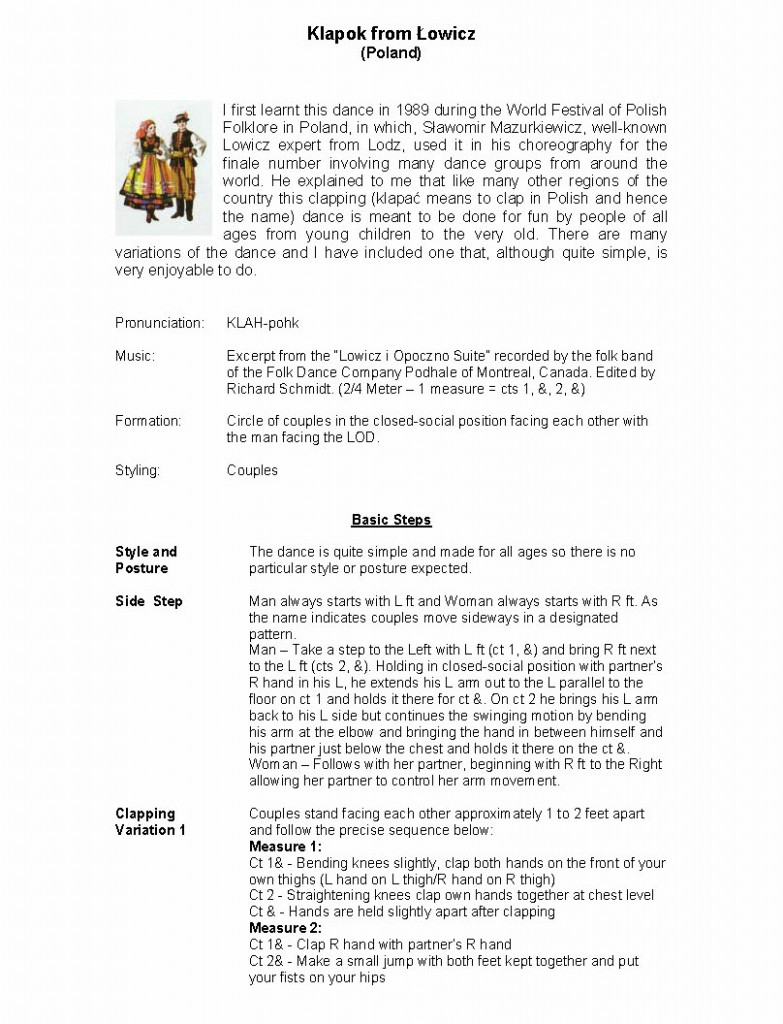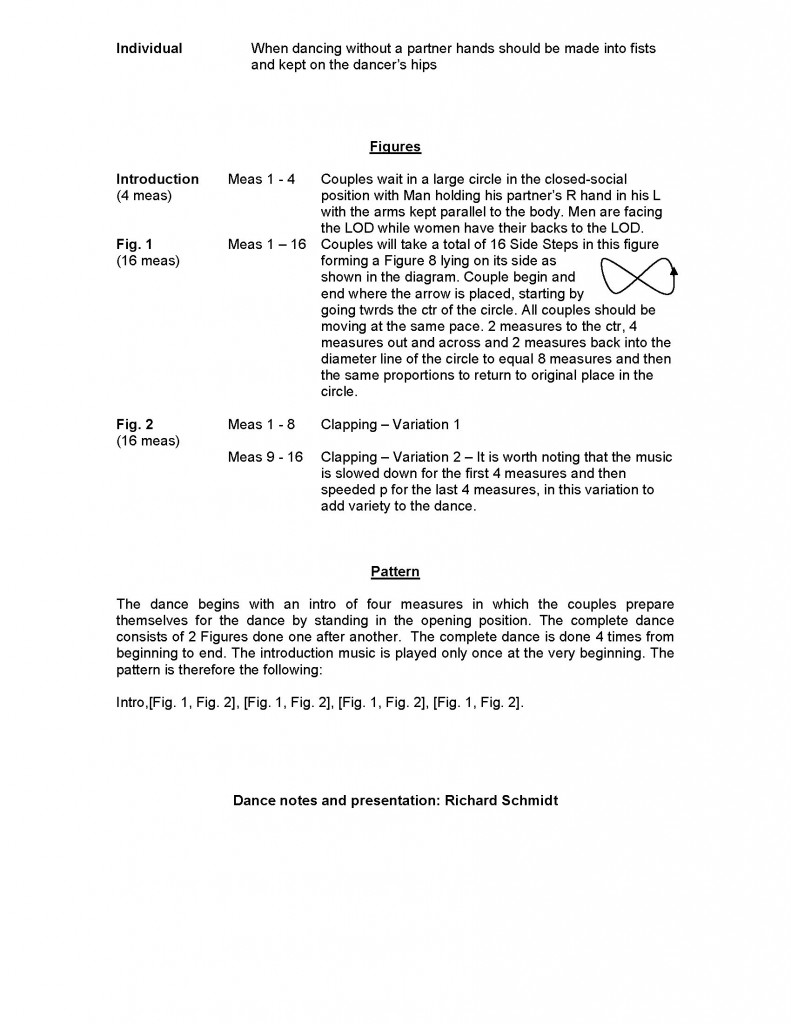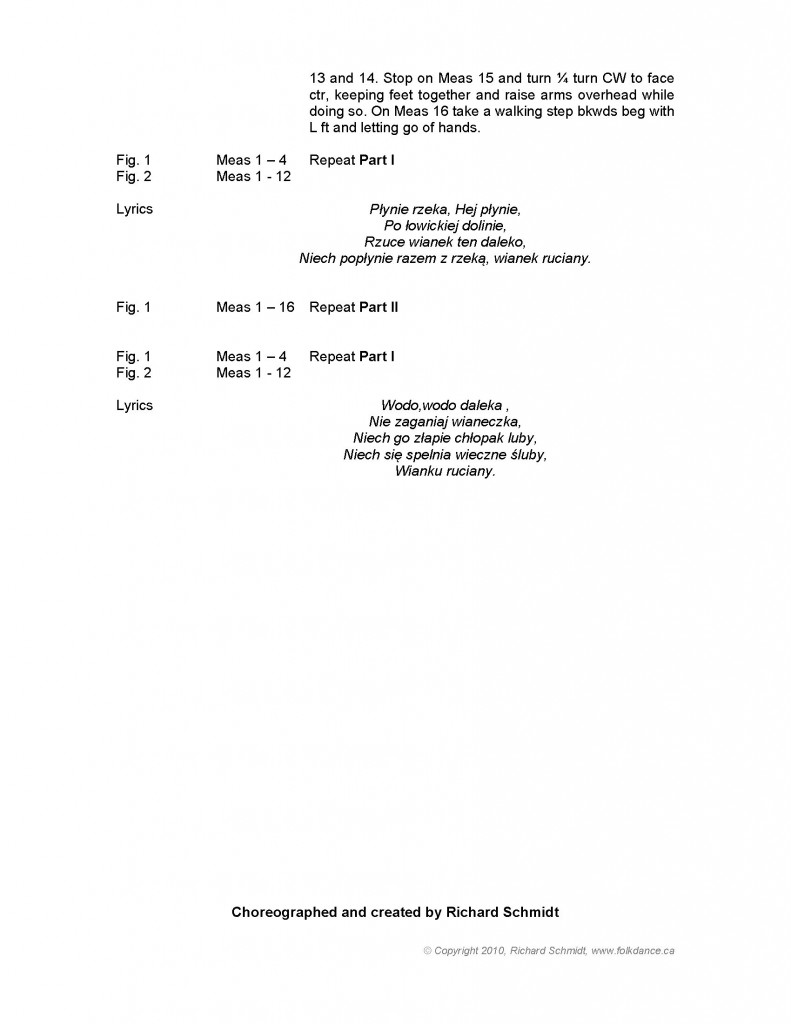I first learnt this dance in 1989 during the World Festival of Polish Folklore in Poland, in which, Sławomir Mazurkiewicz, well-known Lowicz expert from Lodz, used it in his choreography for the finale number involving many dance groups from around the world. He explained to me that like many other regions of the country this clapping (klapać means to clap in Polish and hence the name) dance is meant to be done for fun by people of all ages from young children to the very old. There are many variations of the dance and I have included one that, although quite simple, is very enjoyable to do.



LOWICZ – Kujony
The Kujony is a variation of the Kujawiak and is specific to the folklore-rich central region of Lowicz. The dance is done in a slow ¾ meter tempo, with very lyrical melodies. Usually danced by couples, it features a wide range of movement in varied tempos from slow to quite lively. According to old tradition, the Kujawiak, which originated in the region of Kujawy was danced in a slow tempo from start to finish. Adopted at large by the majority of Poland’s regions it became one of Poland’s five national dances. During its different phases of development it featured many variants and styles of dancing. The Kujony of Lowicz is an excellent and beautiful example of one such variant. Taught to me by Sławomir Mazurkiewicz, reknowned choreographer from Łódz, this dance includes a movement by the men symbolizing the use of a scythe in cutting the wheat which grows in central Poland. The rich heavy-woolen costumes of the region also show off the fields of various colour in their striped pattern.



LOWICZ – Sobotki
On the eve of June 23rd, the shortest night of the year, the Poles celebrate St. John’s Eve or as it was known in Pagan times “Sobótki”. Many celebrations include music and dancing, fireworks, boat parades and lighting bonfires. In some regions women were celebrating the shortest night separately from men. Women were throwing herbs to the fire – hoping that it would protect them from evil. Single women make wreaths from herbs and floated them down the river hoping that their future husband would find it and fall in love with them. It was called “Throwing of wreaths” (Rzucanie Wianków), while the men were jumping through the fire to test their strength and courage. Even today the traditional candle-lit wreaths are floated on the Vistula in Krakow during the St. John the Baptist feast – together with fireworks and bonfires to commemorate the holiday.





